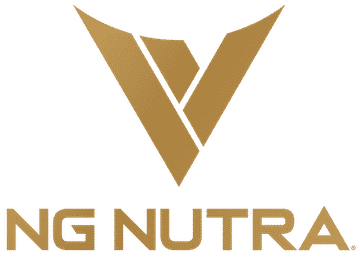How many times have you seen the acronym “HIIT” in the blogs you read or in the workout videos you watch? Short for high-intensity interval training, HIIT workouts have become as commonplace as traditional weightlifting. Why are HIIT workouts so popular? Let’s look at what a high-intensity interval training workout is all about along with the best HIIT exercises.
What is High-Intensity Interval Training?
High-intensity interval training focuses primarily on fast-paced bodyweight exercises. Some more advanced lifters will incorporate weights into a workout, but overall, most of the HIIT exercises don’t allow for that simply for the sake of convenience. For example, while you could incorporate dumbbells into the burpee exercise, it would be awkward, and it would work against the fast-paced nature of a HIIT workout.
HIIT workouts tend to cycle through one set of several exercises before taking a rest break. This ensures the intensity is probably higher than what you might be used to, but it’s also great for promoting several muscular and cardiovascular benefits.
Benefits of HIIT
Here are just a few of the health and fitness benefits you can expect when you make consistent HIIT workouts a part of your routine.
Burns Fat, Supports Weight Loss: Studies show that high-intensity intermittent exercise supports weight loss by increasing fat oxidation, improving glucose tolerance, and decreasing insulin resistance. [1]
Cardiovascular Workout: Consistently engaging in HIIT workouts will dramatically improve both aerobic and anaerobic fitness. An example of aerobic fitness would be jogging or swimming where anerobic fitness would be an activity like weightlifting or sprinting. [1]
Lean Muscle Growth: Given the focus on high volume and compound exercises, HIIT workouts promote the growth of lean muscle. It wouldn’t be ideal if you want to pack on bodybuilder-levels of muscle mass, but you’ll definitely build muscle.[2]
Time Saving: HIIT workouts have been considered one of best workouts for long-term adherence. One of the primary reasons for that is the fact that the workouts are so short, yet so effective. A high-intensity interval training workout tends to last for about 15 minutes on average.
Best HIIT Exercises
Here are some of the most popular and effective HIIT bodyweight exercises. Since there’s no need for additional weights, you can do these exercises anywhere with a reasonable amount of space.
Jump Squats: Kick your hips back like a traditional squat but as you come up, throw your hands back and jump into the air.
Butt Kicks: Jump into the air and try to touch your feet to your butt before landing.
Tuck Jumps: Jump up and try to bring your knees to chest level before landing.
Jump Rope: I recommend using a speed rope for this exercise. Jump into the air as you simultaneously swing the rope up and down, timing it to make sure the rope gets underneath your feet in time.
Jumping Lunges: Leap into the air and when you land, do so with your left foot forward and right foot back. Jump again and switch sides. Continue alternating.
Box Jumps: Kick your hips back like a traditional squat but as you come up, throw your hands back and jump into the air, landing on the box. Step down and jump up again.
Push-Ups: Lower yourself to the ground, trying not to flare your elbows out as you do. Pause when the triceps are parallel with the ground and push yourself back up.
Pull-Ups: Focusing the contraction in your back (lat) muscles, think about pulling the bar to your chest. Do not disengage at the bottom of the movement.
Burpees: Perform a push-up and then immediately jump into the air with your hands above your head. Land and go into another push-up.
Mountain Climbers: Maintaining a plank position, keep alternating bringing your knees to your chest.
HIIT Workouts for Fat Loss and Muscle Building
Taking the exercises laid out above, here are two HIIT workouts that you can use starting today. I would recommend alternating the workouts in an “A” and “B” fashion several days per week, depending on your experience level. If you’re a beginner to fitness, you might want to follow this type of schedule:
- Monday: Workout A
- Tuesday: Rest
- Wednesday: Workout B
- Thursday: Rest
- Friday: Workout A
- Saturday and Sunday: Rest
From here, you would begin the following week with Workout B and continue alternating in this manner until you are ready to increase the number of workouts to challenge yourself. And if you’re more experienced with these types of workouts, I’d recommend this schedule:
- Monday: Workout A
- Tuesday: Workout B
- Wednesday: Rest
- Thursday: Workout A
- Friday: Workout B
- Saturday and Sunday: Rest
The same idea applies as above – Once you finish this week, start the next week with Workout B.
HIIT Workout A
Perform all of the repetitions for the first exercise before moving on to the next exercise. Once you complete all repetitions for all exercises, take a break of no more than three minutes before beginning again. Complete three to five rounds.
- Jump Squats: 10 repetitions
- Tuck Jumps: 10 reps
- Jumping Lunges: 10 reps
- Push-Ups: 5 reps
- Burpees: 5 reps
HIIT Workout B
- Jump Rope: 20 cycles
- Butt Kicks: 10 repetitions
- Box Jumps: 10 reps
- Pull-Ups: 5 reps
- Mountain Climbers: 30 reps
High-Intensity Interval Training for Your Workouts
Maybe you have a strength training program that you’re doing right now. Can HIIT workouts find a home in your current program? Absolutely. As mentioned above, HIIT workouts support both aerobic and anaerobic fitness, which means you don’t have to worry about sacrificing your hard-earned muscle by doing too much cardio. Using the schedules above, you can alternate between a traditional weightlifting workout and a high-intensity intermittent exercise workout. Let us know in the comments below if you’ve started to incorporate HIIT exercises into your workouts.
References
- Boutcher SH. High-intensity intermittent exercise and fat loss. J Obes. 2011;2011:868305. doi:10.1155/2011/868305.
- Blue MNM, Smith-Ryan AE, Trexler ET, Hirsch KR. The effects of high intensity interval training on muscle size and quality in overweight and obese adults. J Sci Med Sport. 2018 Feb;21(2):207-212. doi: 10.1016/j.jsams.2017.06.001. Epub 2017 Jun 8. PMID: 28647284; PMCID: PMC7104622.



